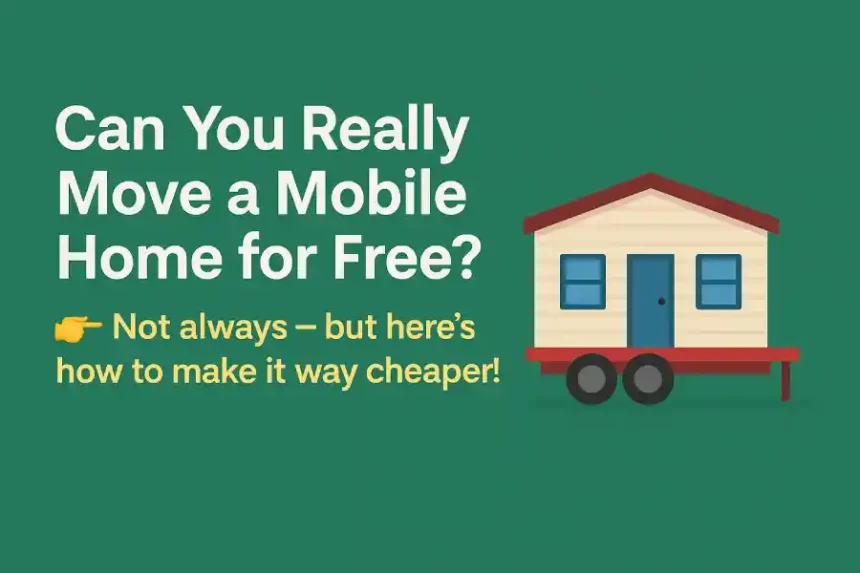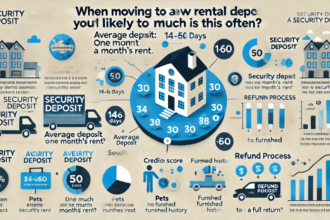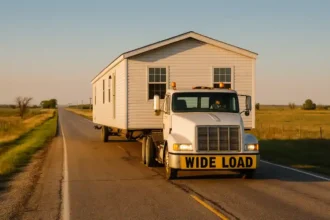The idea of moving a mobile home for free is appealing — who wouldn’t want to relocate without spending thousands? But is it really possible? In most cases, the answer is no — at least not without dealing with legal rules, safety issues, and the high cost of equipment. Trying to move a mobile home yourself without permits or help can be risky and even illegal.
Still, there are smart ways to save. From “transport-only” moving services to park incentives and local programs, this guide will show you how to move a mobile home for free — or at least much cheaper — while staying safe and legal.
How to Move a Mobile Home for Free (Is It Really Possible?)
Some parks and companies will cover your relocation costs if you move your mobile home to their land. Learn how to qualify.
Why Moving a Mobile Home for Free Is Hard (and Risky)
Moving a mobile home sounds like a great way to save money — but it’s rarely free, and it can be dangerous if not done right. Here’s why:
1. Legal and Safety Rules
You can’t just tow a mobile home like a regular trailer. Most states have laws that say only trained and licensed movers can do it.
- You need permits to move a mobile home.
- You need insurance in case something goes wrong.
- Doing it yourself without the right papers can get you in legal trouble.
2. The Equipment Is Expensive
To move a mobile home, you’ll need special tools and vehicles, like:
- A large flatbed trailer
- A strong towing truck
- Escort vehicles (also called pilot cars) to guide the move
Renting or buying this equipment costs a lot — often more than just hiring a pro.3. Planning the Route
You can’t take just any road. You’ll need to:
- Get permits for each town or state you pass through
- Avoid roads that are too narrow or bridges that are too low
- Plan around traffic, weight limits, and road rules
One mistake could cause a big delay or fine.
4. Getting the Home Ready
Before and after the move, there’s work to do:
- Turn off and disconnect power, water, and sewer
- Tie down or secure anything that could move inside
- Prepare the new site so the home can be placed safely
Most moving companies charge extra for this work — it’s not usually included.How to Move a Mobile Home for Free (or as Cheap as Possible)
Moving a mobile home doesn’t have to cost a fortune. While moving it for free is rare, there are smart ways to cut costs or even find relocation help. Here’s how:
Use “Transport-Only” Services
Instead of paying for a full-service move, hire a mover just to transport the home. You do the rest.
You’ll need to handle:
- Turning off utilities like power and water
- Preparing the new site where the home will be placed
This option is much cheaper than a full-service move.
Creative Ways to Get a Mobile Home Moved for Free
If you’re willing to ask around, do some planning, or negotiate, you may find a way to get your mobile home moved at little or no cost.
Ask Mobile Home Parks About Free Relocation
Some mobile home parks want to fill empty spots. To attract new residents, they may offer:
- Free transportation
- Lower rent or waived site fees
- Help with hookup or setup costs
Just call and ask — many parks are open to deals.
List Your Home as “Free to Move”
If you don’t want to pay to move it, try giving it away.
- Post on sites like Facebook Marketplace, Craigslist, or local housing groups
- Some buyers will take the home if they pay for the move themselves
This is a fast way to get rid of a mobile home you no longer want.
Look for Help from Government or Nonprofit Programs
In some areas, help is available if you meet certain needs. You may qualify for:
- Relocation grants
- Disaster recovery support
- Low-income housing programs
These are often offered by:
- HUD (U.S. Department of Housing and Urban Development)
- FEMA (Federal Emergency Management Agency)
- State or local housing offices
This is a good option if your move is due to zoning changes, eviction, or natural disasters.
How to Move a Mobile Home for Free in Texas
If you live in Texas, there are some unique rules and helpful programs that may lower — or even cover — your moving costs. Here’s what you need to know:
Understand Legal Requirements in Texas
In some cases, you can move your mobile home yourself in Texas — but only if:
- The mobile home is registered in your name
- The towing vehicle is also registered to you
Even then, you must get a Single Trip Permit from the Texas Department of Motor Vehicles (TxDMV).
Moving without a permit can lead to fines or denied access to certain roads.
Gather the Required Documents
Before moving, you’ll need to collect important paperwork:
- Certificate of Title for the home
- Proof you’ve paid all property taxes
- General liability insurance
- Installer or transport license (if hiring help)
Check Wind Zone Compatibility
Texas has different wind zones based on location. Your mobile home must match the zone it’s moving to.
- Find your home’s wind rating on the HUD data plate (usually located inside a cabinet or closet).
- If the wind rating doesn’t match, you may not be allowed to install the home in the new area.
Explore Mobile Home Park Incentives
Many mobile home parks in Texas offer move-in deals to fill empty lots.
You might get:
- Free relocation services
- Waived site setup or rent fees
Tip: Call local parks and ask if they offer free move-ins or financial help for relocating.
Seek Local Government Assistance
Some Texas cities and counties provide help for low-income homeowners or residents affected by:
- Eviction
- Zoning changes
- Natural disasters
Programs may include:
- Relocation funds
- Utility connection assistance
- Community Development Block Grants (CDBG)
Start by calling your local Housing Department or city office. Tips to Lower Costs Legally
Tips to Lower Costs Legally
Want to save money without breaking the rules? These tips can help you move your mobile home safely and affordably:
- Get at least three quotes from licensed mobile home movers
- Ask about transport-only options to reduce full-service costs
- Do the prep and setup yourself, if you have the time and skills
- Avoid unlicensed or uninsured movers — it’s not worth the risk
Pro Tip: Some parks or buyers may help cover the move if you’re bringing your home to their land.
Do the prep and setup yourself, if you have the time and skills
Need help with that? Here’s how to pack for a local move.
Common Mistakes to Avoid
Cutting corners can cost you more in the long run. Be sure to avoid these mistakes:
- Trying to tow a mobile home with a pickup truck — it’s unsafe and illegal
- Skipping permits or zoning checks
- Moving without confirming wind zone compatibility for the new location
- Not inspecting the new site before the move
These issues can cause fines, delays, or damage to your home.Frequently Asked Questions
What is the cheapest way to move a mobile home?
The cheapest way to move a mobile home is to hire a transport-only service. This option only covers the actual towing. You save money by handling the prep work yourself, such as disconnecting utilities and preparing the new site. Want real numbers? Here’s how much it costs to move a trailer house.
Do I need a permit to move a mobile home in Texas?
Yes, you need a Single Trip Permit from the Texas Department of Motor Vehicles (TxDMV). You must also show proof of ownership, insurance, and that there are no unpaid property taxes.
Can I move a mobile home myself?
In some states like Texas, you can move your own mobile home if both the home and the towing vehicle are registered to you. However, a legal permit is still required, and it’s not recommended without experience or proper equipment. Moving a mobile home within your city might be seen as a local move, but it still requires permits.
Not sure what counts as local? Find out what is considered a local move.
What does a “transport-only” move include?
A transport-only move includes towing the mobile home and any necessary permits or escort vehicles. It does not include disconnecting utilities, preparing the new site, or setup at the destination.
Are there grants for mobile home relocation?
Yes. Some grants and programs help cover moving costs, especially for:
- Low-income homeowners
- Natural disaster victims
- Residents of closing mobile home parks
Check with HUD, FEMA, or your local housing department for eligibility.Conclusion
Moving a mobile home for free is rare — but lowering the cost is very possible.
With the right planning, transport-only services, and support from parks or local programs, you might get close to a free move without cutting corners. Just be sure to:
- Follow all legal requirements
- Use licensed professionals
- Take the time to prep and plan ahead
When done right, you can move your mobile home safely, legally, and affordably.For more help planning your move, check out our complete Moving & Relocation Guide.
Your Go-To Guide for Mobile Home Moves & More
Home Revista helps thousands of homeowners and movers make smart, confident decisions — whether you’re relocating a mobile home, planning a renovation, or searching for trusted service providers.
Homeowners: Get expert tips, moving checklists, and budget-friendly solutions for your next big move.
Professionals: Connect with a growing audience of homeowners actively seeking reliable relocation and home services.
Explore expert guides, save money, and move smart — all at www.homerevista.com















